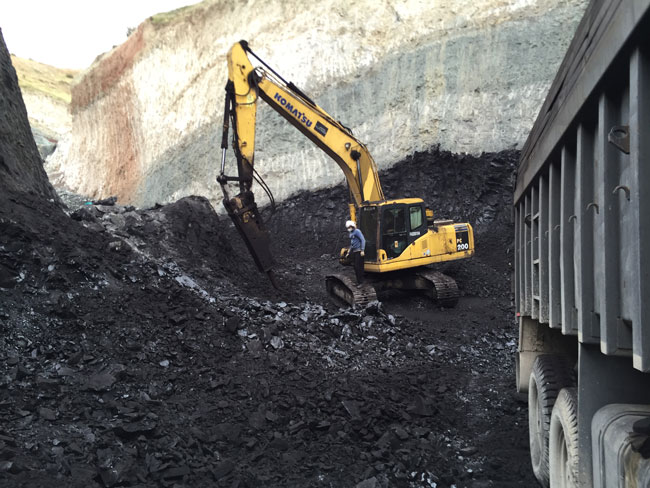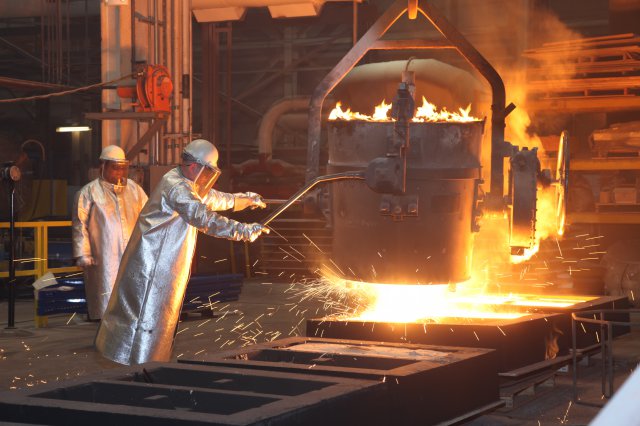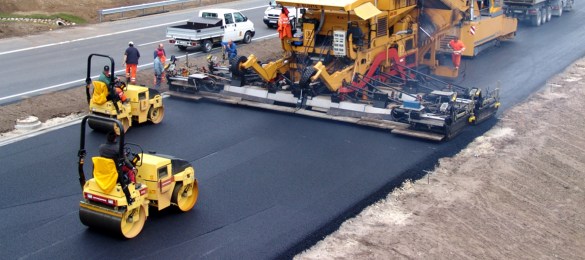Gilsonite Usage

Gilsonite Usage
- In paint industry
- In polish industry
- As carbon black wetting agents for black news ink and heat set and gravure ink
- As a binder in wood products industry
- In drilling mud fluids and oil well cementing
- As asphalt modifiers
- As foundry sands and casting sands additives
- In cementing slurries
- To insulate tanks, tubes and even molding
- As a binder and additive in steel desulfurization products
- To make waterproof coatings for water pipes
- Asphalt driveway coat sealer
- Solvent-based and emulsion pavement sealers
- As a performance-enhancing agent for asphalt mixes
- As an organic fuel in fireworks
- For manufacture of high purity carbon electrodes in the nuclear industry
- As a binder in metallurgical additives and refractories
- In manufacture of con-tact and hot melt adhesives, friction products, and pipe coatings
- In roofing materials primarily as an agent to lower the penetration of petroleum asphalt without aging or oxidizing the base Asphalt
- In Bitumen and Asphalt production
Advantages of Gilsonite Usage
- Readily soluble without heating in aromatic solvents and in most chlorinated solvents
- High Asphaltene content
- High solubility in organic solvents
- High purity and consistent properties
- High molecular weight
- High in resin and Nitrogen content
About Gilsonite – Gilsonite powder, micronized, granulated, lump, ore and rock
Gilsonite is black hard resin and brittle that occurs as asphalt complexes in the border of Iran and Iraq. Gilsonite ore composed mainly of NSO compounds with subordinate saturated and aromatic hydrocarbons. Gilsonite powder is a common drilling mud additive, but it also is used in asphalt paving, roofing and construction paper, paint, ink, explosive, carbon electrodes, and various fuels. At the surface, Gilsonite ore dikes range from several millimeters to more than 5m thick; some are exposed for up to 39km but most are less than 5km in length. The dike cut across various lower Eocene to Oligocene extension fractures caused by local overpressure in oil shale. RAHA Co-Is Iranian Gilsonite rock mine owner and manufacturer of lump and powder in various mesh size in powder and raw type lump with application including FLC which is Fluid Loss Control Additives in oil well drilling mud and filtrate control as hole stabilizer for high temperature high pressure oil well HTHP, HTLP and as bitumen modifier to mix with asphalt to improve performance and stability of bitumen. The Gilsonite is leading in roof coating, building product coating and road seal coat crack sealer suppliers. From gilsonite, we are producing drilling fluid which is shale inhibitor in drilling fluid and reacting with shale to prevent sloughing and swelling. Gilsonite has different analyze and specification since it is mineral and coming from mine same as other minerals and used in more than 160 products, primarily in dark-colored printing inks and paints, oil well drilling muds and cement, asphalt modifiers, foundry sands additives and a wide variety of chemical products. Gilsonite is compatible with coating material, petroleum resin and oil, pitch and bitumen mixture, vegetable oil and decrease cost of material and homologue with most of the materials used in the paint, varnish, primer, mastic, enamel and enamel industry, and at the same time are also highly resistant to acid and alkali materials.
Gilsonite Consumption Usage
RAHA GILSONITE Company is one of the market leaders in the supplier of Gilsonite, a naturally occurring hydrocarbon resin (uintaite). With a number of unique chemical properties and physical characteristics, Gilsonite improves the performance of many critical materials and applications.
Gilsonite is used in the manufacture of wire insulation, paints, and varnishes, construction materials, asphalt, printing ink, oil well drilling, drilling Fluid and in foundry casting. Gilsonite is a geologically interesting and economically significant resource, and its wide range of uses has changed over time with new technology and industrial needs.
Gilsonite usage in Drilling Fluids

For many years, Gilsonite has been used in the oilfield as an additive in drilling fluids. Gilsonite’s unique properties make it important for many oil field drilling fluid products and the recent boom in oil and gas development has increased demand. When gilsonite is added to oil based drilling fluids – and water-based drilling fluids, it partially melts or deforms, plugging off micro-fractures in the rock and smearing the inside of the wellbore to make a tight, tough filter cake that prevents fluid loss. The dissolved gilsonite also increases drilling fluid viscosity, providing lubrication, and together with the sealing off and stabilization of problem rock around the well bore, helps prevent the drill pipe from getting stuck in the well. Gilsonite is also used in cementing fluids as a lost-circulation material due to its plugging and binding properties, and as a slurry density reducer in some specialty cementing Fluid.
Gilsonite using as Below Application
Gilsonite is mineral Bitumen and its quality is like Petroleum Gilsonite and there is no difference between them. The only Gilsonite is in Lump mode but Petroleum Gilsonite is refinery product from Oil that is in Drum and therefore Gilsonite price is very lower than Petroleum MD approximately lower than half of Gilsonite price.
Gilsonite can mix with petroleum MD like MD 60/ 70 with additives of Mazut ( low-quality fuel oil), or SBS ( styrene butadiene styrene copolymer) for using in Asphalt Industries, Gilsonite factories, and Waterproof roofing factories.
Waterproof roofing factories normally mixing Gilsonite with SBS ( styrene butadiene styrene copolymer) and then using it in place of Bitumen or oxidized bitumen.
When Asphalt companies using Gilsonite their Asphalt will not break in cold weathers and hot weather it will not melt Very soon.
Gilsonite usage in the different industry as:
- Gilsonite usage for road construction and asphalt
- Gilsonite usage for roof insulation and isolation
- Gilsonite usage for oil drilling as drilling mud
- Gilsonite usage for Ink, Paint, and Coat
- Gilsonite is combined with coal to produce coke that has usage in different industries such as foundry sands, glass industry, …
As we said we are one of the main suppliers of Gilsonite in Iran and we can offer very lower price to you than other Gilsonite Companies.
Gilsonite usage in Inks & Paint Industry

When you read a newspaper or magazine, you touch the benefits of Gilsonite. The jet black in many heatset printed magazines and high-quality publications simply would not be possible without the excellent carbon black dispersion properties of Gilsonite.
Gilsonite delivers economic performance too. It is more cost effective than hydrocarbon and phenolic resins. For premium performance, you can rely on Gilsonite—Naturally Better.
Gilsonite usage In Paint Industry

Natural Bitumen or Gilsonite has been used for a long time in the paint industry. This material is used in paints with a bitumen base. The high nitrogen content of Gilsonite increases the adhesiveness and the stability of the Gilsonite against ultraviolet light. This product is mainly used in coating the exterior surface as also creating resistance against acids, it is used as the coating for car chassis and coating of metal structures. Gilsonite has been used as the first wet carbon agent in black inks for newspapers and magazines. High concentrations of Gilsonite have been used in newspaper printing inks. The main usage of this material is for dispersing black carbon particles which comprise the black color of the printing inks. This material is used in black ink as a cost-effective replacement for other resins. Moreover, in wood paintings, t is used as dark brown paint. Due to the unique chemical and physical qualities of Gilsonite, it can lend useful characteristics to paints and polishing finishes. The high nitrogen content of Gilsonite increases the adhesiveness and stability against ultraviolet light.
Gilsonite powder is readily soluble without heating in aromatic solvents (Benzene, Toluene, Xylene) and in most chlorinated solvents. It is also soluble without heating in aliphatic and low aromatic solvents (VM&P and other Naphtha, Ink Oils and Mineral Spirits), but mixing time is longer. Without heating, the pulverized grade is recommended. In paint applications, Gilsonite is usually used in combination with bitumen (asphalt). In most cases, if Gilsonite is used alone, the final paint will be very hard and brittle after drying. If normal straight-run bitumen is used alone, the finished paint is too soft and tacky. Therefore, a combination of Gilsonite and bitumen is used to achieve the desired hardness (penetration) and drying time of the finished paint. In addition to imparting hardness to the paint, Gilsonite is also increasing the paint’s: (1) adhesion; (2) gloss; (3) chemical resistance; (4) water resistance; and (5) body. For hardness, Gilsonite has a zero (0) penetration (at 25°C; 100 gm. 5 sec.) compared to the 60–70 pen, 80-100 pen or softer bitumen commonly available from petroleum companies or asphalt manufacturers.
Gilsonite usage in Foundry

For High-Value Iron Castings, Gilsonite Performs Like No Other.
Foundries around the world have known for decades that – when put to the fire of molten iron – Gilsonite brings high performance to your foundry sand.
For your complex, high-value iron castings, Natural Bitumen performs like no other carbon additive. Gilsonite’s naturally superior properties mean high-quality castings with better finish and fewer imperfections.
Gilsonite is combined with coal and other ingredients as an additive in foundry sands to ensure the quality of the molded part. In sand case, by adding Gilsonite and asphalts at approximately one-third the level of sea coal the pitch had the same 900°F (482.2°C) volatiles. At this level, loss on ignition with asphalt, and Gilsonite was less than 50% of that obtained with seacoal and pitch while the Gilsonite and asphalts evolved less total gas when compared to seacoal and pitch Gilsonite had the least visible smoke generated in the laboratory tests. The lower gas evolution should reduce ventilation load on the pouring floor. The physical property relationships developed in new sand mixes were confirmed by sand using Gilsonite as an additive. Casting finish off a Gilsonite mix has been equal to Seacoal.
Gilsonite is also used as a carbonated additive in casting sands that create smoother plates on gray iron castings. In a lower temperature than coal, it makes the material volatile so that it improves the process of separating the metal from the mold. Moreover, the surface of the mold is smoother and cleaner. Gilsonite can be used as an additive to or a replacement to sea-coal or other common carbonated additives in the foundry. One of the great advantages of using Gilsonite on the sand mold is increasing the hot resistance, increasing the pure (dry) resistance, decreasing the penetration and increasing the hardness of the mold. Physical Sand properties with Gilsonite resin are equal or superior to sea coal at significantly lower additive levels. Gilsonite improves sand density, water requirements and strength (green, dry, baked, and hot). Gas evolution curves show that Gilsonite volatilizes more rapidly than sea coal. Gilsonite has the same total volatiles as sea coal at one-third the additive level.
During pouring, the gasses given off from the carbonaceous additives form a gaseous film which prevents the molten metal from making direct contact with the clay-coated sand grains, reducing sand-metal contact and consequently burn-on. When heated, the carbonaceous materials provide volatile, hydrocarbon gasses which then pyrolyze to deposit a lustrous carbon graphitic layer in the metal-mold interface region. This deposition acts as a physical barrier to iron silicate formation as well as not being readily wetted by molten iron. The combination effect is to inhibit burn-on and penetration.
Advantage:
- Reduce imperfections due to the rapid reactions
- Improve sand peel from casting at shake out
- Produce smoother, cleaner casting surface
- Minimize imperfections, casting losses, scrap
- Three times as much gas generated as sea coal for better mold release
- High lustrous carbon for better finish
- Reductive atmosphere for less reaction between mold and casting for fewer imperfections
Gilsonite usage in Road Asphalt

High-Strength, High-Performance Roads That Stand The Test Of Time.
High-performance road surfaces have long been made possible with the use of Gilsonite. Gilsonite’s superior properties make it the go-to modifier for hot mix pavements and pavement sealers.
Gilsonite is used in asphalt mix as an agent for increasing the efficiency and productivity. The asphalt mixed with the high content of Gilsonite without adding any other balancing materials so that it becomes a highly solid material. Gilsonite as an additive in the total of or portion regarding value and cost can replace SBS polymers in asphalt modifiers. Asphalt modified by Gilsonite have a higher stability, lower shape changes, stability against low temperatures and higher resistance against water compared to asphalts void of Gilsonite. In fact, the main task of Gilsonite in this application is to improve the stability of pavements and their resistance against shape changes which increases the ability to withstand high applied load and it is used in areas under high pressure. There are almost 35 different replacements for Gilsonite, but since their ratios of cost to benefit are higher than Gilsonite’s, Gilsonite is more often used.
- High strength and durability
- Superior deformation performance
- Reduced pavement thickness
- Reduced temperature susceptibility
- Increased resistance to water stripping
Gilsonite usage In Chemical Productions

Gilsonite in chemical products
This material is a non-toxic, non-carcinogenic and cost-effective replacement for natural rubber. Gilsonite is used as a solidifying agent in metal alloys. This material has a high carbon percentage which creates a reductive environment when added to melted steel. In shaping metals, Gilsonite is again used as a solidifying agent. Moreover, compared to other polymers, Gilsonite produces less smoke in high temperatures. Gilsonite as a solidifying and mixing material is used in steel desulfurization process. This material has volatile ingredients which facilitate the mixing of desulfurization chemical materials such as magnesium and hydrated lime. Moreover, it increases the percentage of the carbon added to steel and as soon as oxidation happens in high temperature, it creates a reductive environment. In the manufacturing of products such as clutch plates and brake parts is used using Gilsonite which is basically as a solidifying agent. This material is also used as an additive for increasing paint,s shade and in some cases for reducing friction. Furthermore, Gilsonite is used as insulated coatings for pipes. This material is a non-toxic gum with excellent adhesiveness. Anti-corrosion coatings which are chemically inert can be produced from Gilsonite. In the wood and carpentry industry, Gilsonite is used as a solidifying agent (glue). This material is waterproof and corrosion resistant. Since Gilsonite is a very hard resin, it produces very hard products. This material is also used in making paints and because of its chemical properties, it penetrates the surface of the objects which should be glued together. Moreover, a sticky material is produced from Gilsonite which is resistant against the destructing effects of ultraviolet light.
Gilsonite usage in Chemical & Other

Gilsonite is used as a binder and additive in steel desulfurization products. It has consistent volatiles that promotes mixing of the other desulfurization chemicals like magnesium and hydrated lime. It will also add carbon content to the steel and will provide a reductive atmosphere as it oxidizes at high temperatures.
Gilsonite is used to make waterproof coatings for water pipes. It is a natural non-toxic resin with excellent adhesion properties. A corrosion-resistant, chemically inert pipe coating can also be made from Gilsonite.
Gilsonite is used for preventing the pipes from corrosion and it acts as an additive in pipe isolator, which increases the pipe life significantly. Gilsonite is used in different industries as a resin for waterproofing purposes, for example in Automobile industry it is used as an additive in coating car’s under the body.
Natural Bitumen combines with many other chemicals and materials that take advantage of its unique physical and chemical properties. Binder and coating applications in metallurgical, wood product, refractory, and other industries further demonstrate the versatility and usefulness of this remarkable material.
Gilsonite usage in Construction & Road paving

Asphalt producers use Gilsonite resin, road paving engineers and paving contractors who are concerned with PG specifications, high performance, and cost effectiveness. Gilsonite, long known as a bitumen reinforce and the hardening agent, also offers a unique combination of high performance and economical for high-stress paving, as well as preservation applications. A significant benefit of Gilsonite is in producing road pavement mixes of higher stability than conventional ones.
Various properties of asphalt are manipulated to produce a product that has the appropriate wear properties, rut resistance, fatigue and low temperature cracking resistance, adhesion strength, viscosity and pour point. Rut resistance is resistance to longitudinal surface depressions in the wheel paths. Adhesion strength is the maximum adhesion strength of the joint sealant and the joint reservoir, including but not limited to, between the aggregate and the binder. Shove resistance is resistance to permanent, longitudinal displacement of a localized area of the pavement surface caused by traffic pushing against the pavement. The heavy hydrocarbon that can be derived from, without limitation, natural asphalt (Gilsonite), shale asphalt, bottoms from a solvent DE Asphalting process, hard asphalt, blown asphalt, stiff refined asphalt, and flux.
It is generally regarded that Gilsonite reduces pavements’ low-temperature properties making them susceptible to thermal cracking. Gilsonite melted into hot asphalt will reduce penetration and increase the viscosity of the asphalt binder. Gilsonite may also be mixed with aggregate prior to combining with the asphalt binder. Gilsonite-modified asphalt pavements have been particularly successful in highly stressed traffic areas. Transportation has been increased dramatically nowadays. High-stress traffic situations frequently take place around the country.
Advantages:
- Improved resistance to deformation
- Improved the economic performance of the road
- Improved resistance to stripping
- Improved resistance to fatigue
- Improved durability
- Compensation for poor mixes design
- Compensation for poor aggregates
Usage of Gilsonite resin
The term “maltene”, as used herein, refers to the fraction of uintaite that is dissolved when finely ground uintaite is contacted with 20 volumes of hot heptane at 80 solutions is filtered through a 0.8-micron filter. Maltene-enriched fractions of uintaite, such as ER-140 and ER-115, have a weight ratio of maltenes to asphaltenes of greater than about 6; preferably greater than about 15; most preferably these resins are substantially free of asphaltenes, i.e., less than 2 wt. % asphaltenes. Moreover, these resins are also substantially free of ash.
Maltene-enriched ER resins as defined herein have softening points below about 140 relative to natural uintaite; they have at least 50% fewer asphaltenes than natural uintaite, preferably at least 75% fewer, and more preferably at least 90% fewer. These maltene-enriched ER resins also have reduced mineral-derived insoluble, i.e., ash. These insoluble are below 0.1% by weight, preferably below 0.05%. The maltene-enriched fractions of uintaite useful in this invention comprise at least 60% maltenes, preferably at least 80% maltenes, and most preferably at least 90% maltenes. Maltene-enriched ER resins have lower softening points than those of natural uintaite. Solution viscosity, viscosity stability, and melt viscosity are also substantially improved over available grades of natural uintaite. The less soluble, high melting, asphaltene-enriched fractions are also called ER resins.

